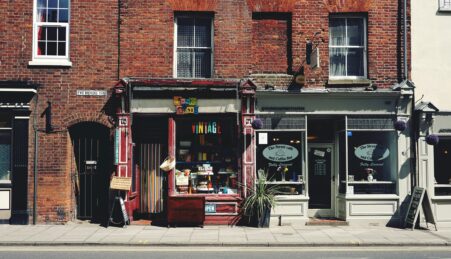Neil Harrison delves into the world of Anne Frank and discovers why her story is still relevant today
WHEN, IN 1942, OTTO AND EDITH FRANK gave their daughter Anne a diary for her 13th birthday, they could not have realised that they were also giving a gift of immeasurable value to the entire world. Now a Manchester exhibition is passing on that gift to the public and to a new generation of school children from the region.
Anne Frank and You,at Z-Arts in Hulme, is both a moving account of Anne Frank’s tragically short life and a powerful lesson in the strength of hope and innocence in the face of hatred and discrimination.
The exhibition begins with Anne Frank’s birth in Frankfurt, 1929, and charts her family’s move to the Netherlands in 1933 in order to escape what her Father Otto described as, ‘hordes of nationalistic, cruel, anti-Semitic criminals’.
The Frank’s fears were realised in May 1940, when the German army invaded the Netherlands. Rather than risk them being deported, Otto, with the selfless aid of his employees, who risked their own safety to help, took the decision to hide his children in his business premises in Amsterdam. It was here, in a concealed room in the attic, where Anne Frank would spend the next two years.
 |
| A full-size replica of Anne Frank’s hidden bedroom |
Amid the historiographical section of the exhibition sits a life-size replica of Anne’s bedroom. This room in the secret annexe where she wrote the diary that ‘became a real friend for her, and a way of expressing her innermost thoughts’, would serve as her sanctuary, but also her prison.
Today, however, the room and the whole exhibition are filled with the smiles and exuberant chatter of children from Moss Park Junior School in Stretford. There can be no better measure of the worth of Anne Frank’s enduring message than new generations eagerly learning about, and interacting with, the lessons of it through the activities provided for them here – there is a blank diary in which the children are invited to ‘denounce an injustice, condemn an act of discrimination or speak up against abuse’ and, like Anne, share their ‘own dreams, ideals and hopes for the future’.
Leading the children through the displays and orchestrating the activities is Marian McQueen of The Anne Frank Trust, assisted by volunteer ambassadors from St. James C of E High School in Bolton. Marian is clearly passionate about her work and she explains why the continued telling of Anne Frank’s story is so important.
 |
The Anne Frank Trust’s Marian McQueen
helps to get the exhibition’s message across. |
“All the key themes of Anne’s story are still in evidence today. The purpose of the exhibition, of bringing children to learn about it, is to make them aware that prejudice and discrimination are still around but they have the opportunity to stand up to it”.
In fact, the second part of Anne Frank and You does exactly that. Whilst still immersed in the context of the hidden annexe (the fear of the Gestapo and the holocaust), the exhibition takes an inspiring turn. Suddenly we are right up-to-date: contemporary issues are observed through the lens of history. These issues bear an important relevance to the children in attendance. They range from the story of footballer Mario Balotelli, who has often suffered racist abuse from the terraces, to Malala Yousafzai, the 15 year old Pakistani schoolgirl shot in the head and neck by the Taliban last year, after daring to speak out about equal rights to education for women. Malala herself has been described as, ‘the Pakistani Anne Frank.’
 |
|
Children from Moss Park Junior School,
Stretford, examine the displays.
|
There are stories here of the evils of prejudice: the racist murder of Stephen Lawrence and the horrors of the Bosnian Conflict. There are also inspiring stories of courage and of those people who take a stand against violence and injustice: Liberian peace activist and Nobel Peace Prize winner, Leymah Gbowee,and Alexander Rose, founder of the STOP campaign against youth violence. All of these examples – and more – are used to bring Anne Frank’s voice into the 21st Century. As Marian emphasises: “Anne’s story did not die with her. It continues to challenge preconceived notions of the nature of prejudice.”
This dynamic and intelligent exhibition succeeds in its mission to bring Anne Frank’s message into the modern world. Extracts from her diary are dotted around the room. In spite of the (sometimes difficult) nature of the subject matter presented, her words remain a constant reminder of the endurance of human spirit and of the power of innocence over prejudice, discrimination and intolerance.
‘How wonderful it is that no-one need wait, but can start right now to gradually change the world. How wonderful it is that everyone, great and small, can immediately help bring about justice by giving of themselves’. -Anne Frank
Neil Harrison is studying Social History at Manchester Metropolitan University. He is an aspiring journalist and a terrible guitar player. Read his blog LooseRiver and follow him on Twitter @looseriver









Leave a reply